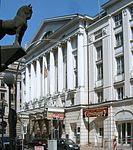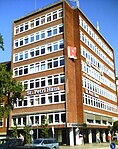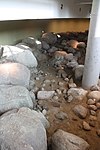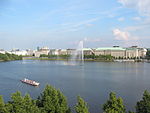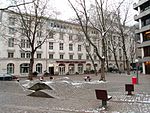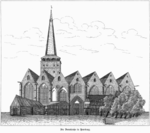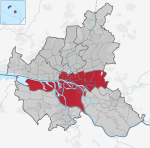Europa Passage

Europa Passage is a large shopping mall in the Altstadt quarter of Hamburg, Germany, located between the streets of Ballindamm/Jungfernstieg and Mönckebergstraße near the lake of Binnenalster. It was opened on 5 October 2006. Within the 5-level mall 125 shops and 27 catering outlets can be found on an overall length of around 160 metres and a space of 30,000 square metres. Another 30,000 square metres of office space are located within the building. The total investment cost of the building amounted to 430 million Euro. The building is operated by ECE Projektmanagement and owned by Alida Grundstücksgesellschaft GmbH & Co KG (Alida Real Estate Company). The passage was designed by Hadi Teherani of BRT Architects.
Excerpt from the Wikipedia article Europa Passage (License: CC BY-SA 3.0, Authors, Images).Europa Passage
Europa Passage, Hamburg Altstadt
Geographical coordinates (GPS) Address Nearby Places Show on map
Geographical coordinates (GPS)
| Latitude | Longitude |
|---|---|
| N 53.5514 ° | E 9.9967 ° |
Address
REWE
Europa Passage
20095 Hamburg, Altstadt
Germany
Open on Google Maps
Experiences
Is this place worth visiting?
A great place to go shopping!

